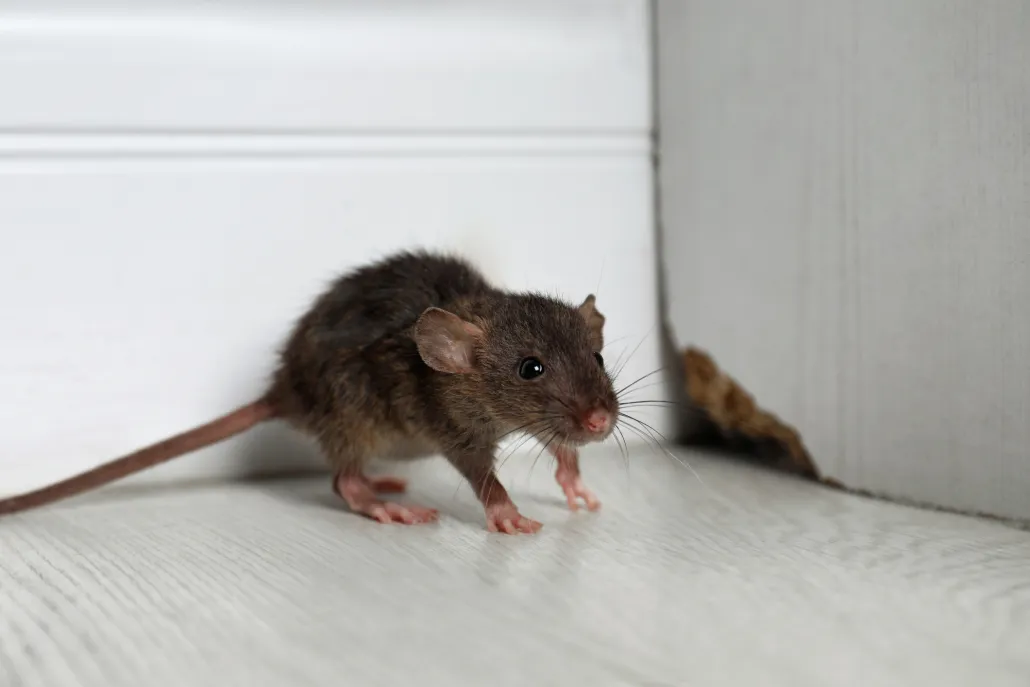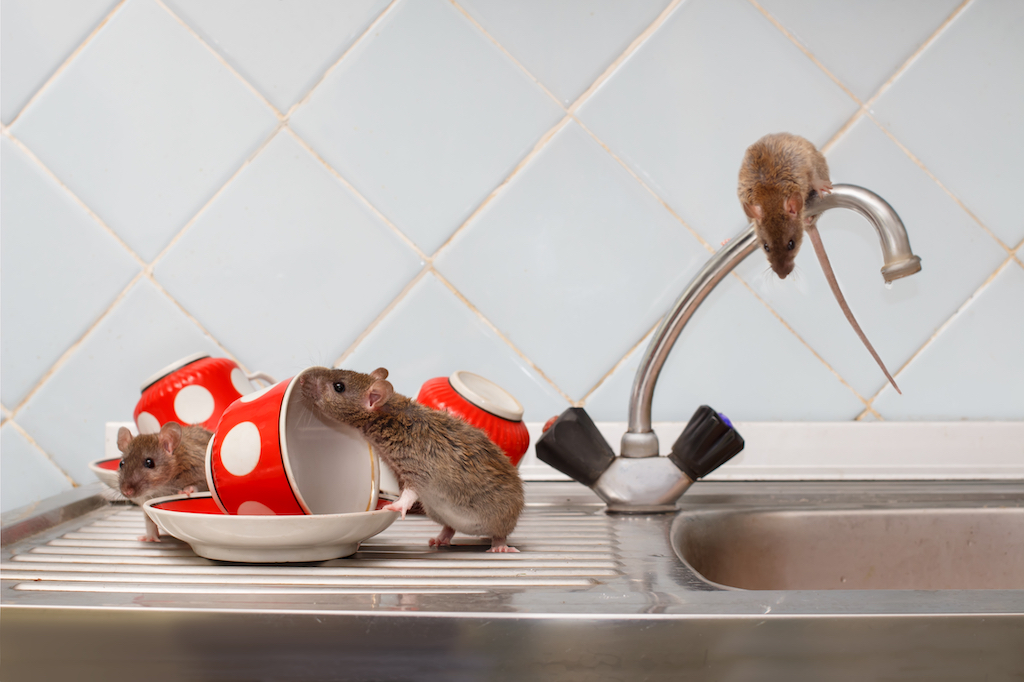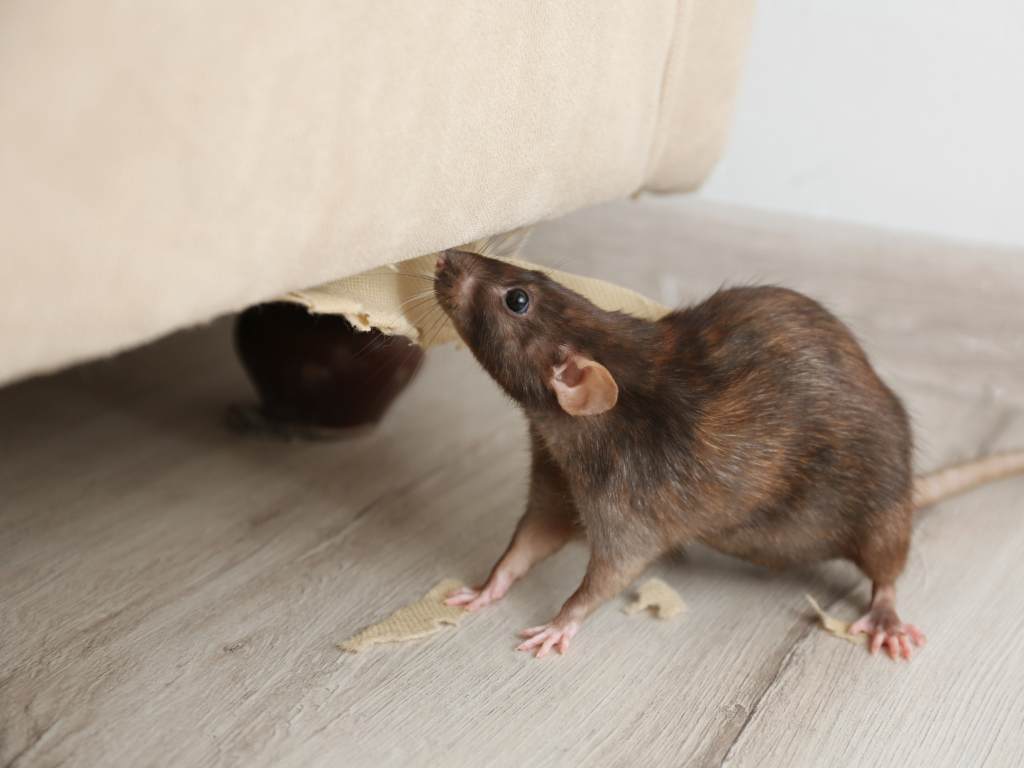Florida’s subtropical environment—featuring warm temperatures, mild winters, and elevated humidity—charms residents and travelers seeking year-round comfort, yet it also supports certain resilient pests, notably rodents. Whether facing mice or rats, the mild climate, abundant moisture, and frequent occupant transitions create ideal conditions for these unwanted visitors. In Fort Lauderdale, along with the neighboring community of Plantation, a minor rodent presence can escalate rapidly if the first signals—scattered droppings, late-night squeaking, or gnawed edges on packaging—go unaddressed. This service page clarifies how rodents flourish under Florida’s conditions, the key warning signs, and why calling on a professional exterminator for rodent treatments is the most thorough way to ensure a pest-free living or commercial environment. By reacting to early clues—like small, dark droppings behind cabinets or scurrying noises in walls—you spare yourself occupant anxiety, possible structural damage, and more complicated, drawn-out remediation down the line.
Why Rodents Prosper in Florida

- Mild Winter Temperatures
In colder regions, sub-freezing winters greatly reduce mouse or rat populations, forcing them into dormancy or killing off many. Florida’s winter seldom remains below freezing for long, allowing rodents to continue foraging and reproducing year-round. Indoors, occupant-controlled air conditioning or heating keeps temperatures comfortably consistent, guaranteeing rodents face minimal seasonal obstacles to feeding and breeding unless occupant vigilance or professional solutions intervene. - High Humidity and Steady Rainfall
Rodents need water to survive, which Florida’s frequent showers and humid air supply abundantly. Even modest leaks—under sinks, near air conditioner lines, or along roofs—can fulfill rodents’ moisture needs. After heavy rains, rodents may abandon flooded outdoor burrows, slipping indoors through foundation cracks or door gaps. Without occupant-based dryness improvements—like sealing cracks—these rodents can settle in kitchens, bathrooms, or crawl spaces if occupant housekeeping remains partial. - Minimal Seasonal Dormancy
In many colder states, rodents experience partial dormancy during long, frigid winters, slowing breeding cycles dramatically. Around Fort Lauderdale or Plantation, no harsh winter imposes such forced inactivity. A small infiltration can steadily expand, as occupant routines rarely shift enough seasonally to hamper rodent feeding or nesting. Prompt occupant synergy—like verifying suspicious droppings or squeaks—plus advanced pest control keep expansions contained. - Ample Food Access
Mice and rats eat nearly any organic material—from crumbs on floors to unsealed cereals or poorly lidded trash bins. In occupant-driven households or commercial properties, minor lapses—like leaving out leftover scraps—become rodent buffets. As Florida’s climate seldom disrupts occupant daily habits drastically, rodents find consistent feeding opportunities unless occupant housekeeping or caretaker routines remove them daily. - Frequent Movement of People and Goods
Areas like Fort Lauderdale see occupant changes, short-term rentals, and secondhand product exchanges that can unknowingly ferry rodents in shipping boxes, used furniture, or produce crates. Once introduced, rodents hide behind appliances or inside walls if occupant checks—like scanning for droppings—remain partial, letting them nest quietly until occupant sightings become undeniable.
Indicators of a Rodent Infestation
- Droppings
Mouse droppings resemble small, dark grains of rice, while rat droppings are larger, capsule-like. Fresh ones look moist, turning dull and crumbly with time. Finding these near food storage areas, under sinks, or in drawers signals active rodent foraging. - Gnaw Marks and Holes
Rodents constantly chew to wear down their incisors, leaving ragged holes in cardboard, plastic containers, or wooden edges. Torn food bags or partially eaten packaging also imply rodent feeding. If occupant sees these marks or holes near cereals, the problem may be advanced. - Nocturnal Noises
Mice or rats scurry, squeak, or scratch behind walls or above ceilings at night. Hearing faint rustling after lights go out strongly suggests rodents searching for crumbs or water. Identifying the approximate location of these sounds helps occupant or professional discover droppings or nests confirming the infestation. - Nests of Shredded Materials
Rodents gather paper, cloth, or insulation for nests hidden behind large appliances, in dim corners, or inside rarely opened cabinets. Discovering such nests, especially alongside droppings or seeds, reveals active breeding. Prompt occupant or staff nest removal plus rodent extermination prevents an outbreak of litters. - Unusual Pet Curiosity
Dogs or cats may paw, sniff, or stare at empty corners if they sense rodent scents or activity. Investigating these areas often confirms droppings, gnaw marks, or gaps verifying rodent presence.
Potential Risks of Ignoring Rodents
- Health and Sanitation Issues
Mice and rats can contaminate surfaces, utensils, or stored foods with droppings or urine, potentially spreading bacteria. They might carry fleas or ticks indoors, spawning secondary pest concerns. Removing them quickly protects occupant health and property cleanliness. - Structural or Wiring Damage
Rodents chewing wood beams, insulation, or electrical wires can degrade structural components or raise fire risks if cables become exposed. Over time, repeated gnawing behind walls or attics invites costly repairs if occupant detection is late. - Rapid Reproduction
A few mice or rats can breed multiple times yearly, establishing entire colonies behind walls, under floors, or in attics. Prompt occupant or caretaker detection—like noticing droppings—keeps expansions from overrunning large sections of a building. - Daily Stress
The knowledge that hidden rodents roam kitchens or bathrooms undermines occupant comfort. Families may dread discovering fresh droppings or unexpectedly encountering rodents at night. Full extermination returns occupant peace, letting them focus on normal routines and tasks.

Why a Professional Exterminator is Critical
- Complete Indoor-Outdoor Appraisal
A rodent exterminator inspects kitchens, basements, attics, or yard edges for droppings, gnaw marks, or nesting debris. Identifying species—like house mice vs. roof rats—steers bait or trap type. Thorough mapping ensures occupant or caretaker doesn’t overlook hidden infiltration routes, such as behind stoves or under sinks. - Strategic Trapping and Baiting
Over-the-counter methods can scatter rodents deeper into walls if occupant usage is random. Professionals place snap traps, multi-catch stations, or tamper-resistant bait boxes in known rodent highways—like behind appliances—ensuring lethal contact. This kills entire colonies, not just surface individuals occupant might see. - Exclusion and Structural Sealing
Without blocking holes or cracks, new rodents simply replace those removed. Experts identify infiltration points—foundation gaps, pipe openings, poorly sealed doors—and advise occupant or caretaker solutions to seal them, preventing ongoing rodent entry. This occupant synergy cements stable, rodent-free results. - Sanitation Guidance
Occupants or staff must store cereals in sealed containers, remove leftover scraps promptly, and fix minor leaks. Removing easy resources like water and food denies rodents reason to stay. Combined occupant housekeeping plus extermination fosters sustainable control. - Follow-Up and Maintenance
Because mice reproduce quickly, occupant or caretaker re-checks confirm no hidden nests remain. If occupant sightings—like fresh droppings or gnawing—persist, additional or intensified trap and bait efforts finalize occupant relief, ensuring no survivors remain behind walls or attics.
Methods for Rodent Treatments
- Inspection and Nest Mapping
Professionals note droppings around stoves or water lines, verifying infiltration points. Observing species presence, nest location, or droppings distribution shapes trap or bait station coverage. Documenting cracks or holes clarifies occupant sealing tasks for permanent solutions. - Trap Deployment
Snap traps remain efficient for small mice if occupant or caretaker empties them daily. Multi-catch devices handle multiple mice at once. Larger rat infestations might warrant tamper-resistant bait stations. Bait choice—like peanut butter—often lures rodents effectively, ensuring quick kills. - Tamper-Resistant Bait Stations
If occupant or caretaker notices a significant rodent population behind walls or in less accessible corners, stations containing rodenticides discreetly poison entire nests. Slow-acting toxins let rodents return to nests, distributing poison among nest mates. Proper station setup ensures occupant or pet minimal chemical exposure. - Exclusion Repairs
Caulking gaps around plumbing lines, steel wooling foundation cracks, or installing new door sweeps remains crucial to bar further entry. Mice fit through dime-sized holes, so occupant synergy—like thorough sealing—once the property is cleared, keeps replacements from sneaking in. - Environmental Upkeep
Occupants reorganize cluttered storage, discarding old cardboard, sealing grains in plastic bins, or wiping counters nightly. Fixing water drips or removing condensation also undermines rodent survival. These occupant-based dryness or housekeeping improvements hamper rodent re-infestations.
Coverage: Fort Lauderdale and Plantation
Fort Lauderdale: A vibrant city experiencing occupant transitions and tourism. Mice or rats can travel in shipping crates or occupant suitcases, quietly establishing nests behind appliances. Quick occupant scanning—like discovering droppings near garbage bins or hearing squeaks at night—plus synergy with professional extermination hamper expansions across multi-floor residences or older properties.
Plantation: Suburban living bridging older and newer developments. Rodents might enter through foundation cracks or leftover trash if occupant dryness or housekeeping measures remain incomplete. Occupant synergy—like discarding daily scraps and sealing cereals—plus thorough extermination ensures corners or behind walls remain rodent-free.

Why Our Rodent Treatments Excel
- Florida-Focused Tactics
Because southwestern Florida seldom experiences freeze spells that slow rodent breeding, occupant synergy—like dryness, daily cleaning, discarding leftover food—plus advanced trap or bait solutions effectively corner rodents at each infiltration route. This synergy handles near-constant breeding year-round. - Precision and Reduced Chemical Use
We place rodenticides or traps exactly where mice or rats nest, limiting occupant or pet exposure to toxins. Occupants typically wait only until dryness or recommended re-entry intervals if needed. Meanwhile, rodents crossing these strategic points face lethal contact, ensuring quick colony collapse. - Exclusion for Long-Term Results
Removing current rodents solves half the issue. Occupant-based sealing of cracks or poorly fitted doors denies fresh rodents from sneaking inside. This occupant plus professional synergy cements stable rodent-free environments once the active infestation is eradicated. - Follow-Up Assurance
Because rodents reproduce at a swift pace, occupant or staff re-checks confirm no hidden pockets remain. If occupant sightings—like new droppings in storage closets—persist, additional trap or bait placements finalize occupant comfort, guaranteeing no overlooked clusters behind walls.
Next Steps
Spotting small dark droppings near cabinets, hearing squeaks behind walls, or finding teeth marks on food packaging? Contact us to learn more or schedule your service. Our rodent treatments in Fort Lauderdale and Plantation identify hidden nests, close infiltration routes, and deploy potent traps or baits—removing mice or rats thoroughly. By turning to a professional exterminator, occupant guesswork is minimized, guaranteeing that even stealthy rodents behind walls or in lesser-used corners also face lethal solutions.
Swift occupant action—like noticing droppings near leftover scraps, verifying newly arrived furniture for gnaw marks, or scanning behind stoves—stops small rodent colonies from morphing into large-scale infestations overshadowing occupant well-being. Through occupant housekeeping—like discarding clutter or wiping surfaces nightly—and specialized rodent management—like multi-catch traps or insect growth regulators—rodents encounter lethal conditions at each life stage, maintaining southwestern Florida properties free from hidden squeaking or droppings that mar occupant comfort.
Sustaining a Rodent-Free Environment
- Proper Food Storage: Keep cereals, grains, or snacks in sealed containers. Immediately clean kitchen surfaces of crumbs or spills, depriving rodents of easy meals.
- Eliminate Water Sources: Repair minor leaks or dripping faucets, quickly wipe condensation around AC units. Dry conditions hamper rodent nesting attempts.
- Frequent Trash Disposal: Seal garbage in lidded bins, emptying them regularly. Open trash or leftover scraps lure rodents from outdoor edges into kitchens.
- Declutter Storage: Minimizing cardboard piles or unorganized sections in garages or basements denies rodents nesting corners. Using sealed plastic bins also makes dropping detection easier.
- Seal Entry Points: A mouse can pass through dime-sized gaps. Filling cracks around pipes, installing door sweeps, or weatherstripping windows blocks infiltration routes. Regular occupant checks behind appliances or in closets catch fresh droppings or chew marks early.
By uniting occupant vigilance—like dryness measures, organized storage, daily cleaning—and advanced rodent eradication solutions, southwestern Florida buildings avert mice or rats from overtaking corners behind walls. Although Florida’s mild winter fosters constant rodent activity, occupant synergy plus well-placed baits or traps hamper them at every stage, ensuring families or businesses in Fort Lauderdale and Plantation relish the region’s coastal amenities without the distress of hidden rodents rummaging unseen.
